In our previous two articles we have covered basic topics of astrophysics such as stellar clusters and apparent brightness. In this article we will exploring the more complicated, the evolution of a star, and exploring the different possible paths a star’s evolution can take. The sun is the nearest star to Earth, and without it, life would not be able to exist. Our planet is held in orbit by this star, however, eventually the sun will expand and engulf our planet. This article will look at the evolution of stars and the different names for different stages of a star’s life.
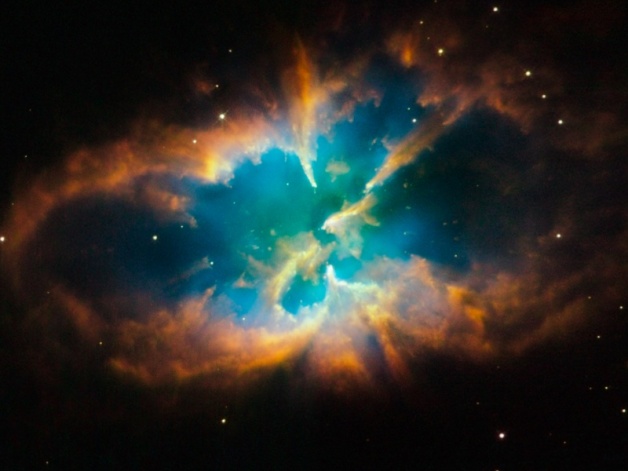
A Planetary Nebula
Stars, surprisingly, begin as nebulas, clouds of dust and gas in space. Gravitation brings the particles together, which increases the temperature of the particles and also ionises them, and they produce light. At this point it becomes a protostar, which is very large and can have a surface temperature of 3000K. However, at this point it is much larger than a star with similar mass, and the gravitation continues, decreasing the volume of the star. The contraction continues until the core has become completely ionised plasma. Nuclear fusion begins converting the hydrogen in the core to helium, the protostar is now a star, which can be found on the Hertzsprung-Russel diagram. As described in our earlier post, the Introduction to Astrophysics, the gravitational pressure and radiation pressure are equal.
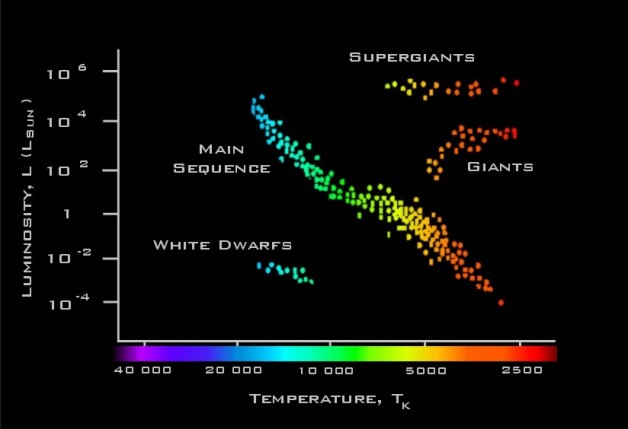
A Hertzsprung-Russel Diagram
The larger the mass of the star the greater its luminosity and temperature, stars can be found in the main sequence. The size of the original mass of the star determines how long its time on the main sequence is. Our sun, is actually a relatively small star, and will burn for approximately 1010 years, however, a star with a mass of 25 times our sun’s will have burn its hydrogen core for only 106 years. After this is complete, the star leaves the main sequence, becoming a red giant. The fusion in the core has stopped and now with no opposing forces the gravitational contraction increases the temperature of the core, and the outer layers of the star. As the outer layers increase in temperature, the star expands, the luminosity increases, but surface temperature decreases. Helium is created from the fusion of hydrogen, and this causes to core to further contract, until the temperature becomes so high that helium becomes to fuse, to produce Oxygen-16 and Carbon-12. The process is repeated. Surprisingly, as the core decreases, the size of the star increases.
Once the fusion of helium in the core is complete, the core contracts again increasing the temperature of the outer layers, allowing helium fusion. This is the second red giant phase, and when the sun goes through this phase, it will likely engulf Earth. During this phase however, the outer layers of the star are expelled, exposing its hot core. The 100000K core ionises the outer layers, causing them to emit visible radiation. This stage is called a planetary nebula. However, if the mass of the star is between 4-8 solar masses, it is possible to produce heavier elements through fusion, namely neon, sodium, oxygen and magnesium. The lack of fusion causes the core to cool, and the sun becomes a white dwarf cooling down and out of sight.
This however, can only occur if the mass of the core is less than 1.44 solar masses. At 1.44 solar masses, the gravitational contraction force is at equilibrium with electron degeneracy. This is the force of electrons repelling each other, when they are tightly packed together. it exists because of the Pauli exclusion principle, which states that no two electrons can be in the same state. But if the core of the star is greater than 1.44 solar masses, the gravitational contraction force is greater than the electron degeneracy pressure, and the star becomes either a black hole or a neutron star. This is called the Chandrashekar limit. Whether it becomes a black hole, or stays a neutron star, will be discussed later in this article.

However if the mass of the star is above 8 solar masses, the process of fusion continues, once helium has been fused, carbon is created. Once all the carbon in the core is fused, the temperature rises to 109 K, here neon is fused. After this, the process repeats and oxygen is fused, producing silicon. Finally the temperature is large enough for the fusing of silicon, which produces iron, the most stable of all elements. This is called a super red giant. 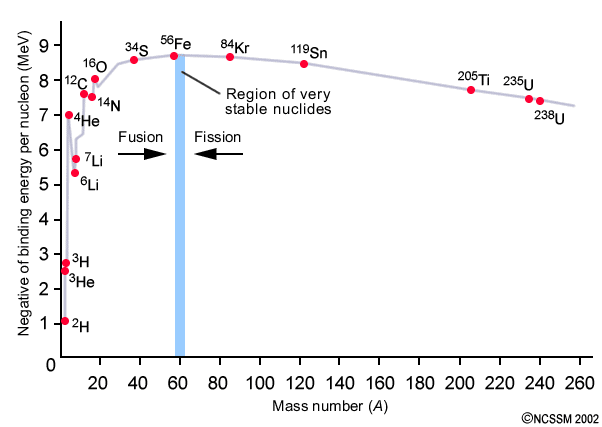
Once the whole core is iron, it contracts rapidly, reaching a temperature of 6 x 109 K. High energy gamma photons, collide with the iron nuclei, breaking them into alpha particles. Then the negative electrons and positive protons combine, producing neutrons and large quantities of neutrinos. These carry energy away from the star, causing it to contract once more. However, this rapid contraction creates produce a wave of pressure that moves outwards away from the centre of the star. At the same time, because the core is contracting, matter is falling into the centre of the star, however, this is repelled by the outwards pressure wave. The wave accelerates, but soon reaches the speed of sound, becoming a colossal shock wave that rips the outer layers of the star apart. This exposes the hot inner cores, and large amounts of radiation enter space. The process is called a supernova. Through this process 96% of the star’s mass is lost, and the material flung out into space forms nebulae, where new protostars can be created.
However, the stellar evolution is not yet finished. The remnant from the supernova has formed into neutrons, and these combine to form an extremely dense star called a neutron star. The collapse is prevented by neutron degeneracy pressure. If the mass is greater than between 2-3 solar masses however, a black hole is formed. The figure is not precise, as the equations regarding extremely dense matter are not yet known. This marks the enter of the stellar evolution as we know it.
A neutron star is an extremely dense star, equal to the density of the whole human population packed into the size of a sugar cube. Neutron stars are typically small, and thus to conserve angular momentum must rotate. This pheneomena is known as a pulsar. The rotating magnetic field of the pulsar produces radio waves, which are detectable from Earth. In fact, it was through these that pulsars were detected originally.

Now we will briefly look at black holes. The earth has a gravitational constant of 9.81ms-2, we can temporarily leave the surface if we jump, but gravity brings us back down. However, if an object was so dense that this acceleration equalled to the speed of light, then nothing would be able to leave the surface of the Earth, not even light. This is what we find in a black hole, and that is the reason why they are black, because nothing can escape then. To picture this we must consider the fabric of space time. Large masses bend spacetime, however, if an object is so large, then space time will be bend around completely, preventing the escape of anything. Even more interesting is the theory of General Relativity, which describes how in a gravitational field, time will slow down. At points where the escape velocity equals to the speed of light, time ceases. This is known as the event horizon. Furthermore, when the entire mass of the star contracts into the event horizon, the density will be infinite. This is known as the singularity, where density is infinite. A black hole consists of both a singularity and an event horizon.
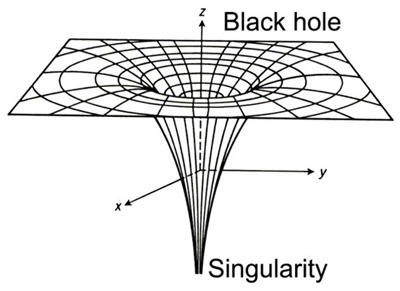
The detection of black holes however, is difficult, as the phenomena does not emit radiation, and thus we cannot see them. We have to look at the nearby stars, that may be having matter pulled off their surface, and radiation emitted by these types of processes. Physicists believe their may be a black hole in the centre of our galaxy.
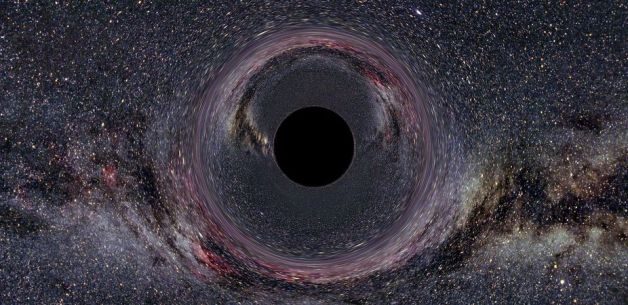
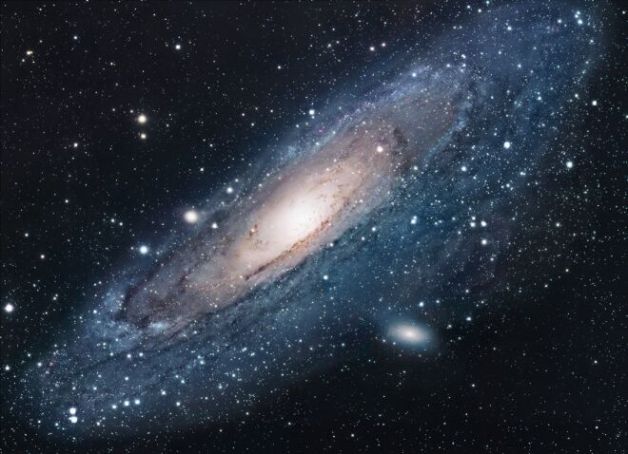
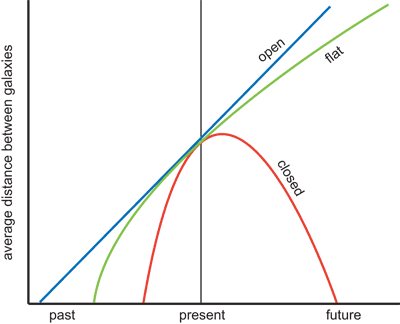

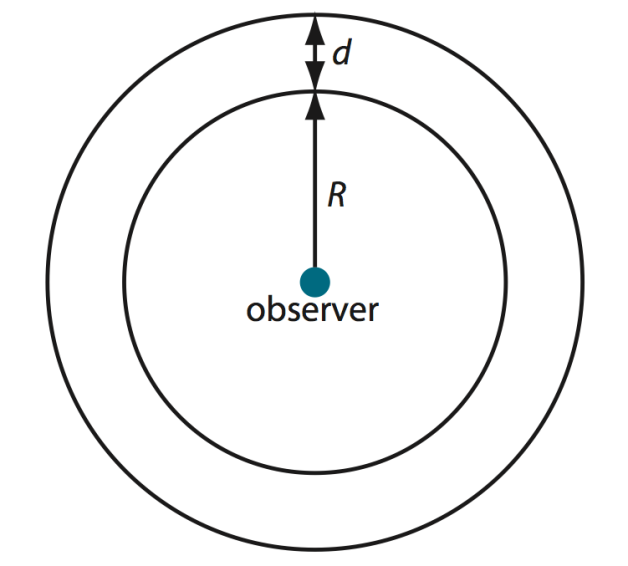










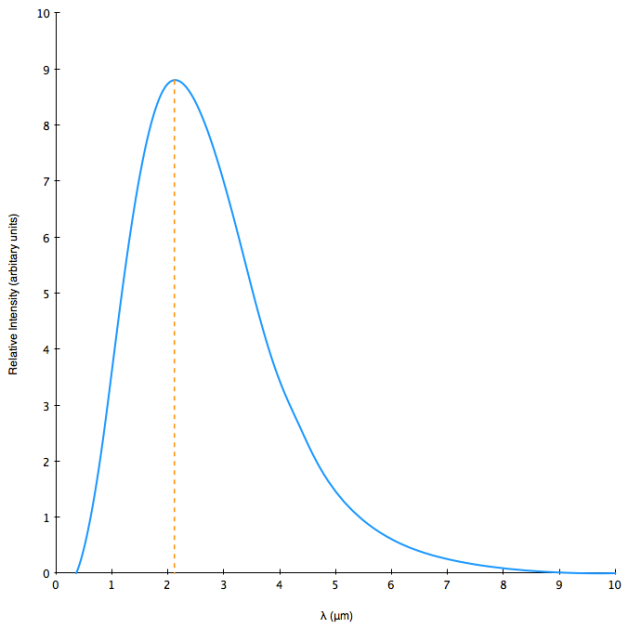
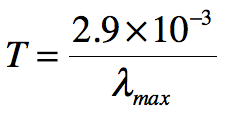
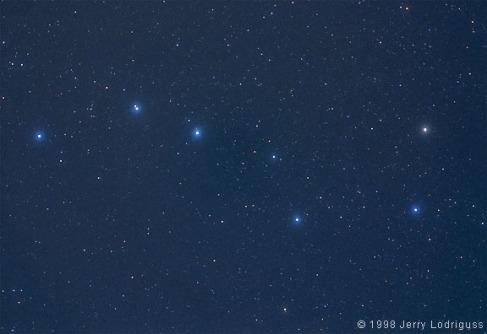














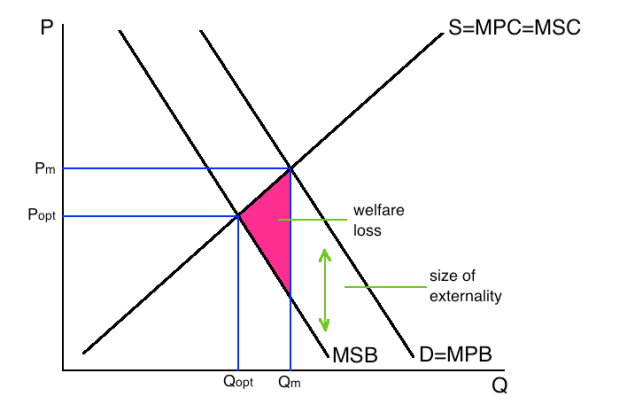
 After government intervention, in this case negative advertising, a decrease in demand occurs and demand shifts left from D to D1, meaning that the externality has decreased in size. Continuing the smoking example, on most cigarette packets the government enforces mandatory negative advertising, such as pictures of cancers. After the decrease in demand, D1 intersects S at a lower quantity, so Q1 is now closer to Qopt, meaning that the quantity supplied is now more favourable from society’s point of view. Thus the pink externality has decreased in size, meaning that society is less worse off.
After government intervention, in this case negative advertising, a decrease in demand occurs and demand shifts left from D to D1, meaning that the externality has decreased in size. Continuing the smoking example, on most cigarette packets the government enforces mandatory negative advertising, such as pictures of cancers. After the decrease in demand, D1 intersects S at a lower quantity, so Q1 is now closer to Qopt, meaning that the quantity supplied is now more favourable from society’s point of view. Thus the pink externality has decreased in size, meaning that society is less worse off.